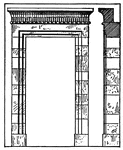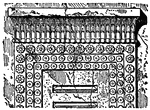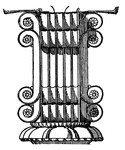
Pericles
"The Age of Pericles. The interval of about fifty years between the close of the Persian and the beginning…
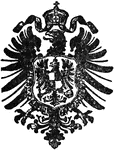
German Eagle
"The Eagle is an emblem in heraldry, war, and legend. The eagle, borne upon a spear, was used by the…
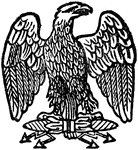
French Eagle
"The Eagle is an emblem in heraldry, war, and legend. The eagle, borne upon a spear, was used by the…

Acinaces
"A Persian sword, whence Horace speaks of the Medus acinaces. The acinaces was a short and…

Aurum
"Gold appears not to have been coined at Athens till the time of the Macedonian empire, with the exception…
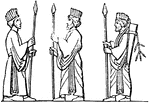
Candys
"A robe worn by the Medes and Persians over their trowsers and other garments. It had wide sleeves,…
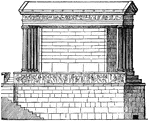
Temple of Nike Apteros
"The first public monuments that arose after the Persian wars were erected under the auspices of Cimon,…

Bust of Herodotus
"The first writer who deserves the name of a historian is Herodotus, hence called the Father of History.…
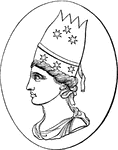
Tiara
"Tiara or Tiaras, a hat with a large high crown. This was the head-dress which characterized the north-western…
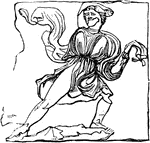
Tunica
"Tunica, an under-garment. Greek. The chiton was the only kind of under-garment, worn by the Greeks.…

Tunica
"Tunica, an under-garment. Greek. The chiton was the only kind of under-garment, worn by the Greeks.…

Tunica
"Tunica, an under-garment. Greek. The chiton was the only kind of under-garment, worn by the Greeks.…

Caucasian Border Design
The Caucasian Border Design. So called by the author because it is seldom found in any but the Caucasian…

Caucasian Border Design
The Caucasian Border Design. So called by the author because it is seldom found in any but the Caucasian…

Caucasian Border Design
The Caucasian Border Design. So called by the author because it is seldom found in any but the Caucasian…
Chichi Border Design
The Chichi Border Design. Usually consists of an eight-petaled flower arranged on the alternate steps…
Fret and Key
Chinese Fret, Greek Fret, and Greek Key border designs. This is suggested by the overlapping of the…
Fret and Key
Chinese Fret, Greek Fret, and Greek Key border designs. This is suggested by the overlapping of the…
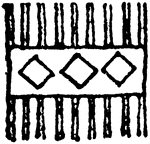
Comb Design
An emblem of the Mohammedan faith to remind the devout that cleanliness is next to godliness. For this…
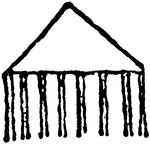
Comb Design
An emblem of the Mohammedan faith to remind the devout that cleanliness is next to godliness. For this…
Crab Design
A border design having the appearance of a series of crabs with their claws extended. Very common in…
Herati Design
Also known as the fish, twin fish and Feraghan designs. Better known as the Herati. It originated in…

Herati Design
Also known as the fish, twin fish and Feraghan designs. Better known as the Herati. It originated in…

Herati Design
Also known as the fish, twin fish and Feraghan designs. Better known as the Herati. It originated in…

Herati Design
Also known as the fish, twin fish and Feraghan designs. Better known as the Herati. It originated in…

Herati Design
Also known as the fish, twin fish and Feraghan designs. Better known as the Herati. It originated in…
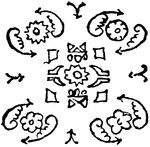
Herati Design
Also known as the fish, twin fish and Feraghan designs. Better known as the Herati. It originated in…
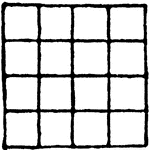
Knot of Destiny Design
This design dates back to Solomon's time. It is one of the Chinese Buddhist ornaments and is therefore…
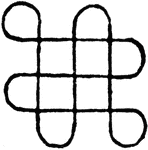
Knot of Destiny Design
This design dates back to Solomon's time. It is one of the Chinese Buddhist ornaments and is therefore…
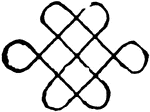
Knot of Destiny Design
This design dates back to Solomon's time. It is one of the Chinese Buddhist ornaments and is therefore…
Kulah Destiny Design
Claimed by some to have originally been intended to represent an alligator. There are exceedingly few…
Kulah Destiny Design
Claimed by some to have originally been intended to represent an alligator. There are exceedingly few…

Lamp Figures
Crude figures of lamps, like miniature tea-pots, often hang from the prayer niche of the Turkish prayer…
Lattice Design
Also known as trellis, diaper, and network. These names are applied to any design which is repeated…
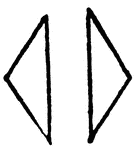
Link Design
Link in Lozenge or Spiral is a combination of two triangles with one side of each parallel with the…
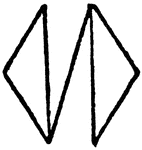
Link Design
Link in Lozenge or Spiral is a combination of two triangles with one side of each parallel with the…

Lotus Design
Very much resembles our pond lily with the exception that the color is of a brilliant purple on the…
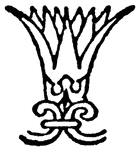
Lotus Design
Very much resembles our pond lily with the exception that the color is of a brilliant purple on the…

Lotus Design
Very much resembles our pond lily with the exception that the color is of a brilliant purple on the…

Lotus Design
Very much resembles our pond lily with the exception that the color is of a brilliant purple on the…

Lotus Design
Very much resembles our pond lily with the exception that the color is of a brilliant purple on the…
Greek Meander
A border design also known as the zigzag, the wave crest, or the water motif. It consists of a series…
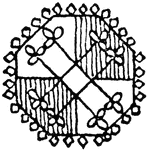
Octagon Design
Represents the eight directions of location and is found in Turkoman, Chinese, and Caucasian products.…
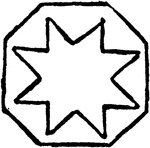
Octagon Design
Represents the eight directions of location and is found in Turkoman, Chinese, and Caucasian products.…
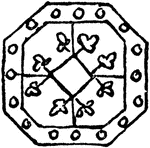
Octagon Design
Represents the eight directions of location and is found in Turkoman, Chinese, and Caucasian products.…

Sunburst
Palace or Sunburst design known by the latter name inasmuch as its shape suggests the radii around the…

Pear Design
"Also known as the cone, the palm leaf, the river loop, the crown jewel, the seal, the almond, the feather,…
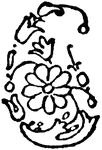
Pear Design
"Also known as the cone, the palm leaf, the river loop, the crown jewel, the seal, the almond, the feather,…

Pear Design
"Also known as the cone, the palm leaf, the river loop, the crown jewel, the seal, the almond, the feather,…

